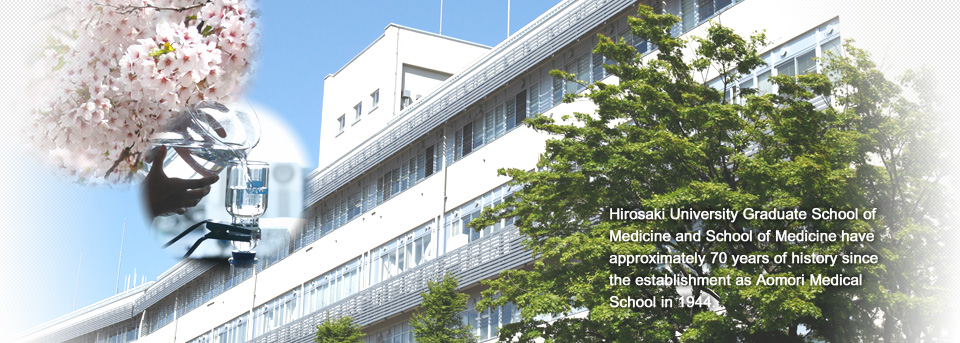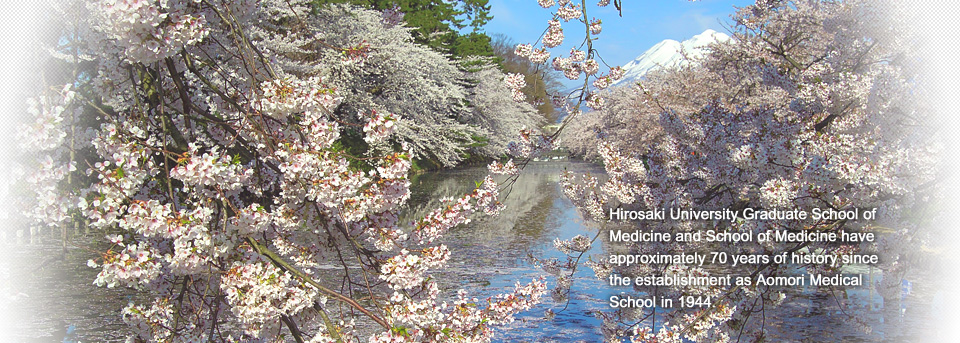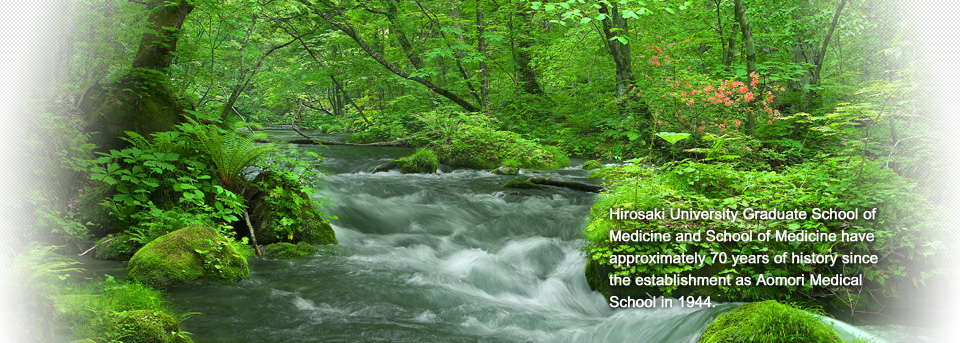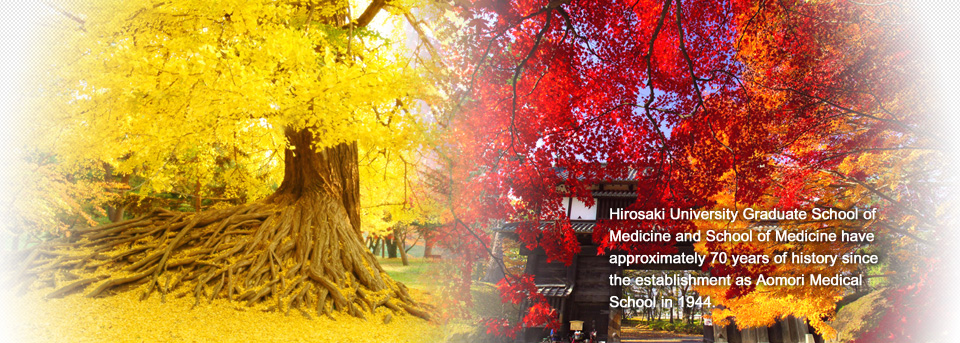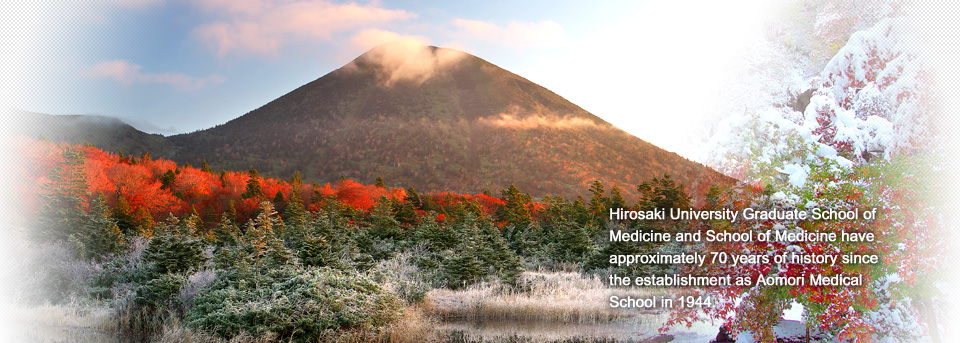Message from the Dean of the Graduate School of Medicine at Hirosaki University
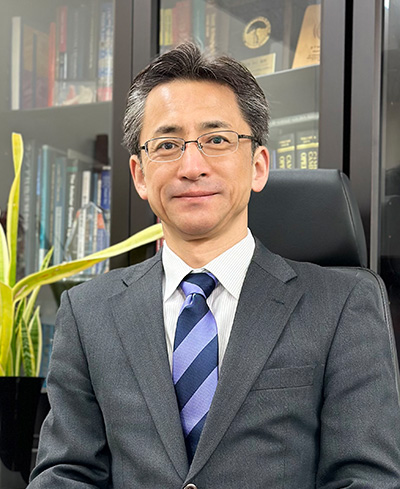
Yasuyuki Ishibashi, MD, PhD.
Dean, Graduate School of Medicine, Hirosaki University
Welcome to the homepage of the Hirosaki University School of Medicine. I am the Dean of the Graduate School of Medicine at Hirosaki University, also serving as Professor and Chair of the Department of Orthopaedic Surgery.
Hirosaki University School of Medicine was founded in April 1944 as the Aomori Medical School in Aomori City. Because of the city was largely destroyed at the end of Established in April 1944 as the Aomori Medical School in Aomori City, our institution underwent significant changes after World War II. Due to extensive war damage, the medical school relocated to Hirosaki City, officially becoming the Hirosaki Medical College in February 1948. In May 1949, it was reestablished as Hirosaki University School of Medicine, becoming the second oldest National School of Medicine in the Tohoku region of northeastern Japan under the new Japanese higher education system.
The guiding philosophy of Hirosaki University, "communicating to the world, creating with our community," highlights our commitment to both global outreach and local engagement. We also prioritize globalization alongside regional cooperation and contribution. This philosophy is reflected in our support for local healthcare, our emphasis on medical education, and research grounded in the region, and our efforts to share our research findings globally. Our curriculum stands out for its focus on "community-oriented education," "education that responds to changes in society," and "cultivation of a research mindset.
The "community-oriented education" includes Early Exposure in the first year, Introduction to Community Medicine in the second year, Social Medicine Practice in the third year, Introduction to Clinical Practice in the fourth year, and Clinical Clerkship II in the sixth year, in which students practice community (rural area) medicine. As for "education that responds to changes in society," we offer classes to meet the needs of society, such as the principles of medicine (medical ethics), radiation exposure medicine, and medical safety. In the third year, students spend about six months in a laboratory for training to develop a research mind. Students are taught one-on-one about laboratory research and even present their research on and off campus. Through our educational programs, our goal is to cultivate doctors with a broad international perspective, adaptable thinking skills, and a deep appreciation for their local community. In 2022, our School was accredited by Japan Accreditation Council for Medical Education ( JACME ) as meeting international standards in its field-specific evaluation of medical education.
The Graduate School of Medicine has 12 Basic Science Departments and the Center for Advanced Medical Research, 34 clinical departments, and more than 30 Endowed Departments and Joint Research Departments. Currently, more than 200 graduate students are enrolled and conducting distinctive research. The "Iwaki Health Promotion Project" is being promoted mainly by the Department of Innovation Center for Health Promotion, and by analyzing the big data obtained in this project, research is being conducted on early detection and prevention methods for dementia, cancer, lifestyle-related diseases, and others. This project not only strives to elevate Aomori Prefecture to a region with an extended life expectancy but also represents a significant endeavor aimed at societal integration. The Faculty of Medicine Hospital plays a central role in Aomori Prefecture‘s medical care, and as the only hospital with specific functions in the prefecture, is committed to providing advanced medical care and training excellent medical personnel. The Advanced Emergency Medical Center also serves as a center for radiation exposure medicine.
Hirosaki University is located in a historical city with many old temples and shrines, and famous buildings constructed in the Meiji and Taisho periods. The spring cherry blossoms at Hirosaki Castle are some of the best in Japan, and there are also seasonal festivals such as the Neputa Festival (summer), the Chrysanthemum and Autumn Leaves Festival (autumn), and the Snow Lantern Festival (winter). Students are encouraged to immerse themselves in their studies and extracurricular pursuits amidst the natural beauty of Hirosaki. We sincerely aspire for our students to become future leaders in clinical practice and research , making significant contributions to their fields.

Yasuyuki Ishibashi, MD, PhD.
Dean, Graduate School of Medicine, Hirosaki University
Welcome to the homepage of the Hirosaki University School of Medicine. I am the Dean of the Graduate School of Medicine at Hirosaki University, also serving as Professor and Chair of the Department of Orthopaedic Surgery.
Hirosaki University School of Medicine was founded in April 1944 as the Aomori Medical School in Aomori City. Because of the city was largely destroyed at the end of Established in April 1944 as the Aomori Medical School in Aomori City, our institution underwent significant changes after World War II. Due to extensive war damage, the medical school relocated to Hirosaki City, officially becoming the Hirosaki Medical College in February 1948. In May 1949, it was reestablished as Hirosaki University School of Medicine, becoming the second oldest National School of Medicine in the Tohoku region of northeastern Japan under the new Japanese higher education system.
The guiding philosophy of Hirosaki University, "communicating to the world, creating with our community," highlights our commitment to both global outreach and local engagement. We also prioritize globalization alongside regional cooperation and contribution. This philosophy is reflected in our support for local healthcare, our emphasis on medical education, and research grounded in the region, and our efforts to share our research findings globally. Our curriculum stands out for its focus on "community-oriented education," "education that responds to changes in society," and "cultivation of a research mindset.
The "community-oriented education" includes Early Exposure in the first year, Introduction to Community Medicine in the second year, Social Medicine Practice in the third year, Introduction to Clinical Practice in the fourth year, and Clinical Clerkship II in the sixth year, in which students practice community (rural area) medicine. As for "education that responds to changes in society," we offer classes to meet the needs of society, such as the principles of medicine (medical ethics), radiation exposure medicine, and medical safety. In the third year, students spend about six months in a laboratory for training to develop a research mind. Students are taught one-on-one about laboratory research and even present their research on and off campus. Through our educational programs, our goal is to cultivate doctors with a broad international perspective, adaptable thinking skills, and a deep appreciation for their local community. In 2022, our School was accredited by Japan Accreditation Council for Medical Education ( JACME ) as meeting international standards in its field-specific evaluation of medical education.
The Graduate School of Medicine has 12 Basic Science Departments and the Center for Advanced Medical Research, 34 clinical departments, and more than 30 Endowed Departments and Joint Research Departments. Currently, more than 200 graduate students are enrolled and conducting distinctive research. The "Iwaki Health Promotion Project" is being promoted mainly by the Department of Innovation Center for Health Promotion, and by analyzing the big data obtained in this project, research is being conducted on early detection and prevention methods for dementia, cancer, lifestyle-related diseases, and others. This project not only strives to elevate Aomori Prefecture to a region with an extended life expectancy but also represents a significant endeavor aimed at societal integration. The Faculty of Medicine Hospital plays a central role in Aomori Prefecture‘s medical care, and as the only hospital with specific functions in the prefecture, is committed to providing advanced medical care and training excellent medical personnel. The Advanced Emergency Medical Center also serves as a center for radiation exposure medicine.
Hirosaki University is located in a historical city with many old temples and shrines, and famous buildings constructed in the Meiji and Taisho periods. The spring cherry blossoms at Hirosaki Castle are some of the best in Japan, and there are also seasonal festivals such as the Neputa Festival (summer), the Chrysanthemum and Autumn Leaves Festival (autumn), and the Snow Lantern Festival (winter). Students are encouraged to immerse themselves in their studies and extracurricular pursuits amidst the natural beauty of Hirosaki. We sincerely aspire for our students to become future leaders in clinical practice and research , making significant contributions to their fields.
